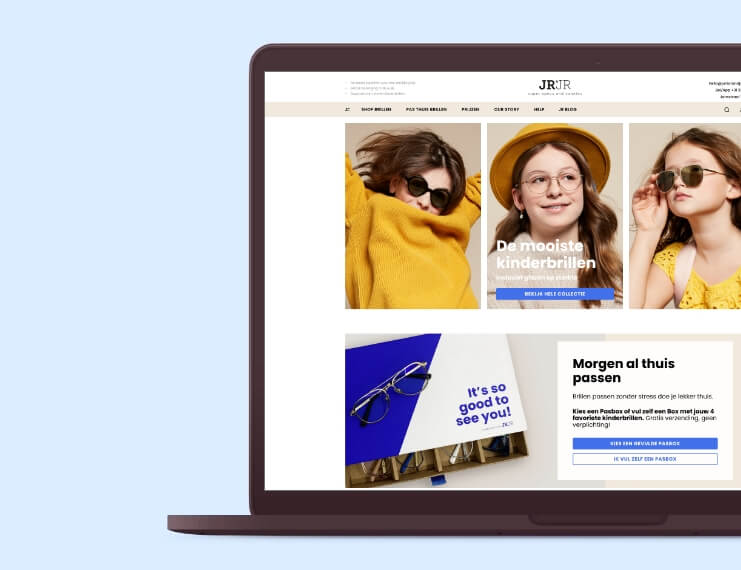Recap: the formula for e-commerce growth
Since this is already the third blog in a series of four, it can’t hurt to refresh your memory a bit. What was the general message of the two blogs before this one?
In the first blog we explained that buying traffic is really not the way to go when you want to grow your e-com business. Instead, you should switch from acquisition to retention, from quantity to quality, from focusing on numbers to focusing on people, by taking a genuine interest in your existing customers.
Did you know great customers are made, not born? And that your own actions are the key to getting those high-quality customers? The secret is to help the customer to be a great customer, wherever you can.
In that first blog we also introduced the e-commerce growth formula to explain how switching from an acquisition- to a retention-mindset works:
Revenue = Frequency x Average Order Value x Customer Count (Traffic x Conversion Rate)
Which means that, if your goal is to grow your revenue, you have five levers to achieve this:
- Frequency: how often your customers place an order
- Average Order Value: how much they spend per order
- Traffic: how many people visit your store
- Conversion Rate: the percentage of visitors that actually buy something
And if customer retention is your preferred tactic, your focus will be on improving Frequency and Average Order Value rather than Traffic (at least in the early stages).
Hence, the second blog in the series was about how to increase your Frequency, this third blog is about increasing your AOV, and the fourth and final blog will be on, you guessed it, how to increase your customer count.
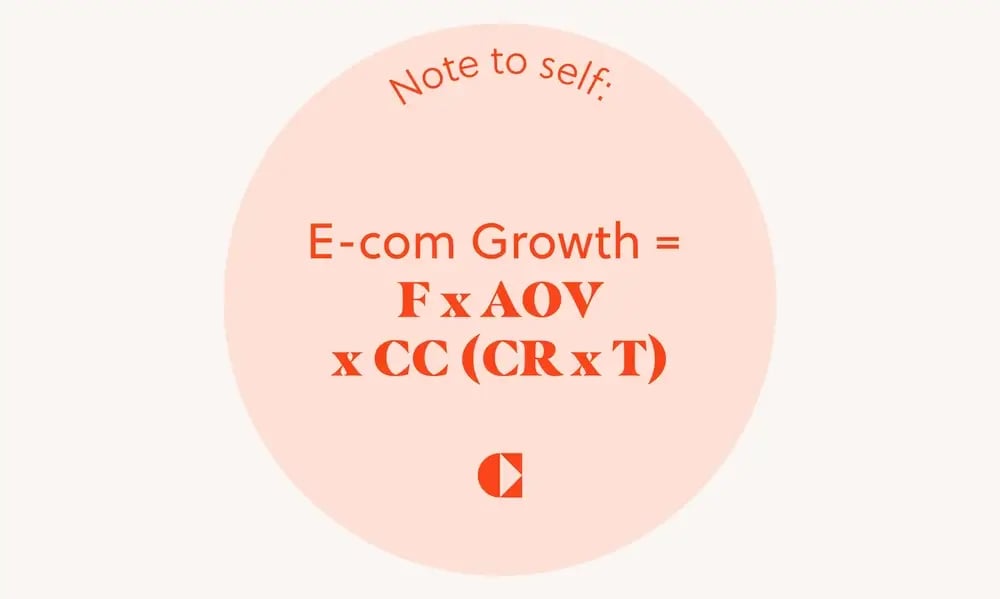
How to make your customers spend more (and increase AOV)
In the previous blog we explained how to make it easy and attractive for your customers to come back to your store more than once - and you probably tried out some of the tips there in your own store and saw the effect.
Let’s take it up a notch, shall we? There’s definitely more where that came from! Wouldn’t it be great if you could also make it interesting for them to spend a bit more money while they are shopping?
This would also have a nice effect on your Average Order Value - the average amount of money a customer spends during each separate moment of purchase, within a given period of time:
Average Order Value = Total revenue / Total amount of orders*
* Shopify merchants can easily find this number in their dashboards, under Reports > Sales per month.
This little lever might very well be the best-kept secret of e-commerce. Many e-com businesses don’t even know what their AOV is, or think of this number as a result instead of a lever for growth. Meanwhile, their more savvy competitors realise up to 35% of their revenue by increasing their AOV. The big advantage of a higher AOV is that you can grow your revenue without having to invest in acquisition - which will increase your profit margin and your cash flow.
So how do you accomplish that? Other than simply raising your prices (more about that later..), there are really only two ways to increase AOV: either you make it worthwhile for your customer to buy more products per order (a.k.a. cross-selling), or you give them a good reason to buy more expensive products (a.k.a. upselling). Either way, it’s about making them an offer too good to refuse. Let’s take a closer look at how to achieve that.
7 cross-selling strategies to pique your customers’ interest
In marketing theory, cross-selling is the strategy of getting a customer who is already in the process of buying to add more products to their shopping cart. We prefer to think of it more as the art of offering the customer a better deal than they originally had in mind. There are many ways to achieve this, but the seven strategies below are our favorites
Tip 1: Promote a related or complementary item
Cross-selling is fast becoming standard practice in e-commerce since all the big players started doing it. The customer orders a plane ticket; the airline asks them if they want a rental car or hotel reservation to go with it. The customer adds a camera to their cart; you show them a handy camera bag in which to carry it around and suggest a few specialised lenses. The customer adds a suit jacket to their cart; you point out to them that there is a matching pair of trousers available.
Where in the process do you promote these complementary items? Testing has shown that cross-selling tactics become four times more efficient if you show the customer the related product in their shopping cart, just before they proceed to the checkout. But, again: test this in your own store to see what works best for your particular audience.
There are a few very good plug-and-play cross-sell apps out there like Rebuy. Rebuy is a personalization platform that empowers e-commerce brands on Shopify to increase their AOV, accelerate sales, and grow retention. We have experienced first-hand that the upsell & cross-sell features of Rebuy can be very powerful. You can use Rebuy's AI to recommend relevant products and offers at the right time and place. You're set up in a few minutes, so go ahead and get your free trial to experience this app.
Tip 2: Offer product bundles and combination deals
Are there products in your shop that are often bought together, like shirts and ties? Or items that people regularly order several of, like socks, razorblades or detergent? Then it is a good idea to offer them as a slightly discounted bundle, or as a combination deal (three for the price of two, for instance). This could inspire other customers who didn’t yet think of buying those items together to start doing so, too. Experiment with several bundles to see which deals are most attractive to your customers - and hence will have a nice effect on your AOV. Again, Rebuy is a great app to realize bundles for your store.
Tip 3: Offer volume discounts
If people buy in multiples, giving them an incentive to buy just a few more items than they usually do will raise your AOV as well. If they normally stop at three pairs of boxer shorts per order, giving them a nice discount when they buy four or five is sure to have an effect. Doing this will save you money on fulfilment and customer service - but it might also have an effect on how often people place in order (Frequency), so test to see what suits your preferences.
Tip: you could take it a step further by only offering these deals to people in your loyalty program, if they are above a certain amount of loyalty points - or by giving bigger discounts the more loyalty credits a customer has.
Tip 4: Offer countdown deals
Scarcity sells! If you sell products that come in limited editions, like very exclusive sneakers for instance, you can add some excitement to your customers’ life by urging them to be very quick about it! Being the chosen one who walks away with the coveted product is sure to make your customer feel very good about it, and about your store.
Use a clock or a big countdown on your website to nudge people into acting NOW, before the deal ends/before the last few items are sold out.
Alternatively, you can apply this tactic in your email marketing, with a discount code to make the deal extra attractive. Or limit the offer to a specific segment of your customer base to make it feel exclusive.
Tip 5: Offer personal advice and/or assistance
Depending on your product, customers might have a need for your advice, assistance or expertise on how to choose or use their product. If you sell clothing people could be looking for a personal stylist, and if you sell photography equipment customers will be interested in your how-to videos on using the camera. No matter what you offer, it should be authentic, true to your brand, and completely original.
Make sure you don’t offer something the customer can get for free elsewhere on the internet - or if you do, get across why your particular expertise is worth paying for. Something that works extremely well for some businesses is to offer a product quiz on their website, where visitors can determine which product is the best fit for them. At Code we used the app Octane to create a product quiz for Fascino Coffee: recommended!
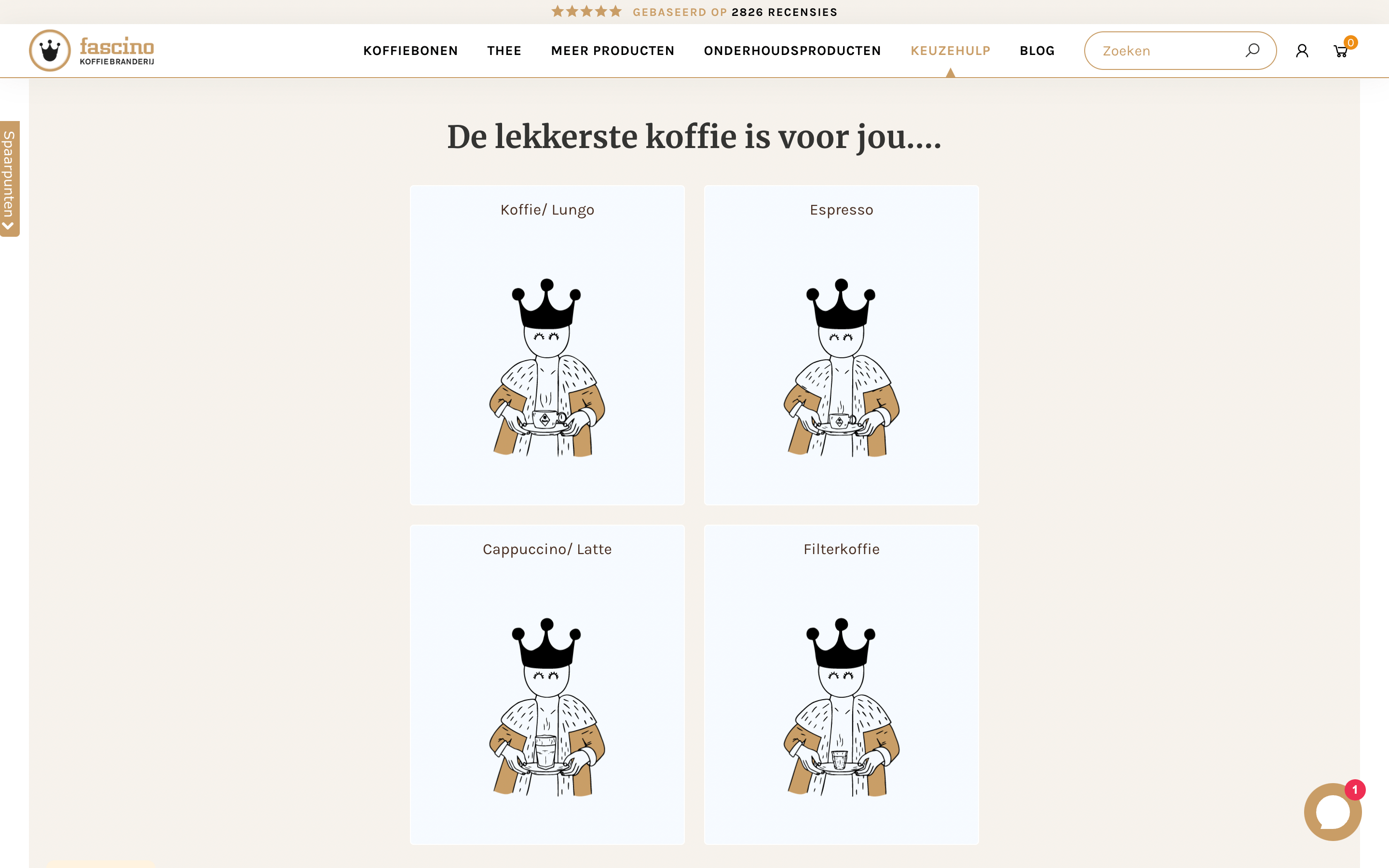
Tip 6: Run a bounce-back campaign
A recent customer is a loyal customer. Your brand or store or product is fresh on their minds, which makes them extra willing to place another order. With a bounce-back campaign, you can facilitate this little trick of the human psyche. Send the customer who placed an order a message the very same day, offering them a deal on an item complementary to their earlier order. Choose a product with a low price and a high margin to trigger a follow-up purchase - and create a sense of urgency by adding a time-limit.
Tip 7: Offer personal advice and/or assistance
Technically this intervention doesn’t count as cross-selling, but it sure is an effective one. People just love free shipping. So much so, in fact, that they will not hesitate to add an extra product to their cart if that will remove the shipping fee from their checkout. Hence, an easy way to raise your AOV dramatically is to simply use your current AOV as the threshold for free shipping.
You might want to check if this move has the desired effect, though, and experiment a bit with different thresholds to see which one works best for your customers. If the threshold is too high you could scare customers away, and we don’t want that obviously.
Similarly, if the number of returns is skyrocketing along with your AOV, it’s probably best to try a different threshold. Your customers aren’t stupid, and tricking them into buying stuff they don’t really want will only encourage them to find ways around it. Instead, try to align with your customers’ concerns: if they bundle their purchases it will reduce the environmental impact of their order, for instance.
7 upselling strategies to get your customers better products
Cross-selling’s natural twin is upselling: offering your customers a better product than the one they originally had in mind by suggesting upgrades, add-ons or higher-quality versions of the product. Put yourself in your customer’s shoes and ask yourself: what additional options or service would I see the value of, and be willing to pay extra for?
Tip 1: Promote a better version of the product
The customer is looking for an economy class plane ticket; you offer them an attractive deal to upgrade it to business class. The customer buys a laptop - with a sizable memory upgrade, at your suggestion. The customer is looking for a pair of sunglasses; you offer to make them prescription glasses with an extra-protective UV coating.
While cross-selling tactics work best when applied in the customer’s shopping cart, upselling is something you should do at the product page. Performs up to 20% better there than anywhere else in your store.
Tip 2: Offer to add giftwrapping and a personal note
Many people order presents online and have them sent straight to the receiver. Those customers will be delighted if you give them the option to have the present gift-wrapped, and if they can hand you their own text to write or print on a personal note. This strategy is widely used in the flower business, but might translate very well to your own niche. Our client Boska found out that over 50% of their orders are presents so we built them a custom giftwrapping option.
Make sure to match the quality and design of your gift wrap and note to your brand and the price point of your product: luxury products need a luxurious presentation.
Tip 3: Offer priority shipping
Sometimes people are willing to pay extra for a fast delivery of their order, especially if your store normally takes a longer time to ship, or if the customer lives in a faraway country. Other instances where priority shipping becomes interesting for them is if they need the order delivered at a specific time - for a birthday present, for instance.
Tip 4: Offer insurance or a prolonged warranty period
Depending on your product, customers might be interested in some insurance or an extended warranty period. Cancellation insurance on tickets of any kind (events, concerts, flights), for instance, or an extra long warranty on an expensive, heavily used item (quality leather couches, chainsaws).
Tip 5: Offer installation, customization, repair and/or maintenance services
Some examples: if you sell phones or laptops, some customers are willing to pay you to set up their device for them. If you sell suits, a lot of customers will want you to customise them for their particular measurements. If you offer sustainable outdoor gear (or anything sustainable really) your environmentally aware audience will appreciate you offering repairs and maintenance on your products. Consider offering those services in the form of a warranty: see also the previous tip!
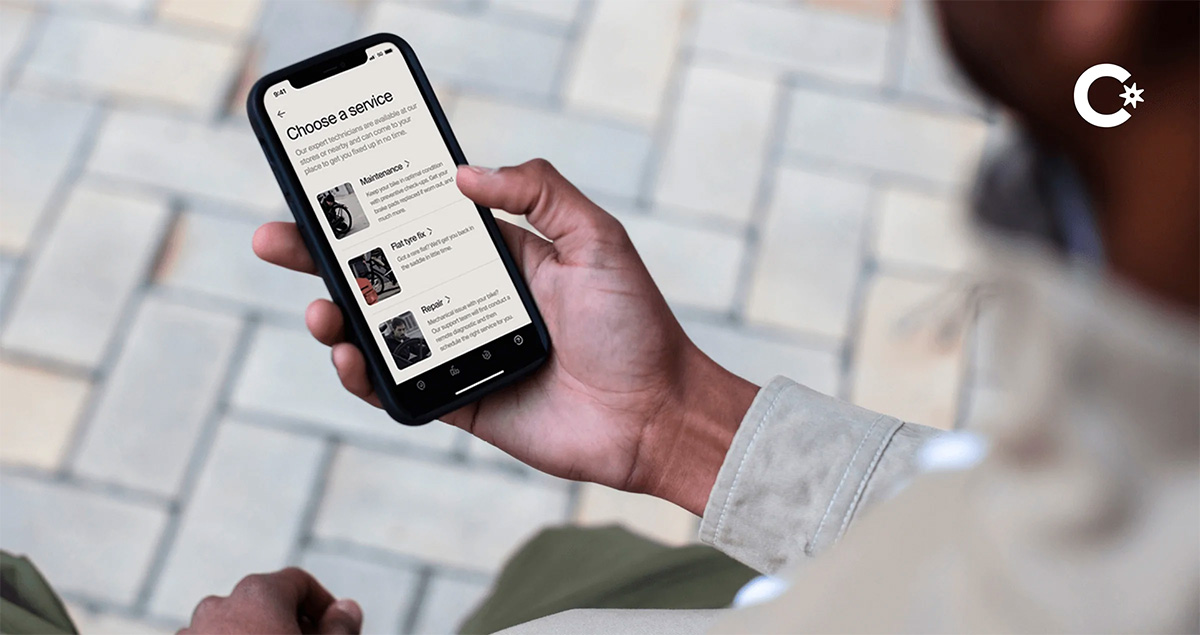
Tip 6: Offer a personalisation of the product
Personalising the product is also a good idea to make customers happily spend a little more. We already mentioned suits in the previous tip, but this could apply to a lot more product categories of course. Think prescription glasses, insoles, or anything else that can be adapted to your customers’ very individual bodies. You might even throw in a paid consultation (in real life or an online call) to discuss what customisations are needed.
Other interesting options are to allow people to put their name (monogram, logo, emblem, motto, what have you) on your product by engraving, embroidering or printing it. Works with a whole range of products!
And of course, people are very picky when it comes to their personal taste. They want to buy your thermos/bike/chaise longue, but not in the three off-the-shelf colours you show in your store. So offer them the option of ordering the item in a custom colour, print or fabric of their own choice - and charge a little extra for it. Guaranteed to make the customer happy, and it might also gain you some social media exposure among design-conscious potential customers.
We've successfully implemented personalization configurations for Kambukka and Rosefield. Read the Kambukka case study or the Rosefield case study.
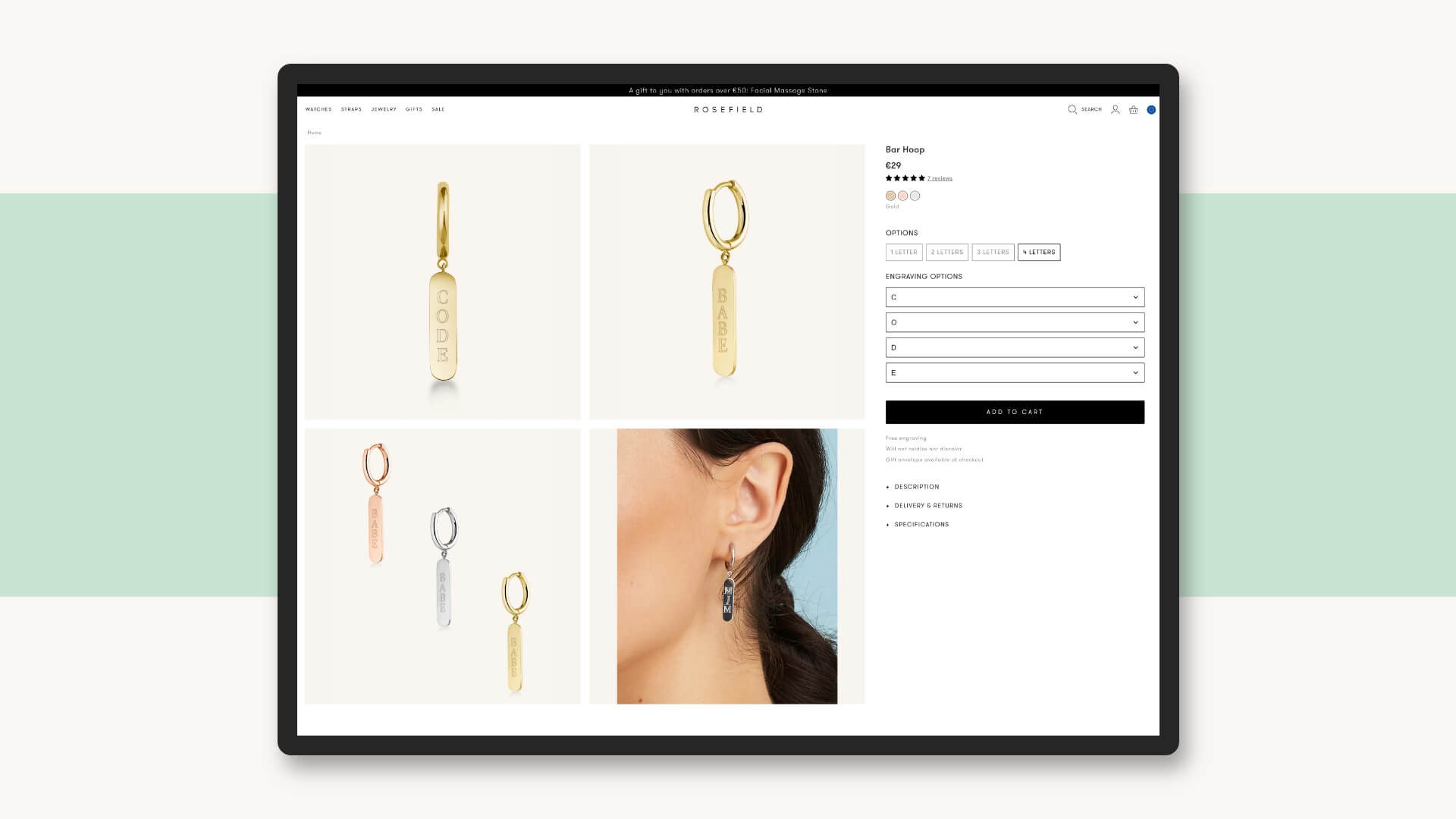
Tip 7: Or just raise your prices and see what happens..
How elastic are your prices, really? Did you ever test them out to see where customers draw the line? If not, you might want to run an experiment - but only if you are not bound by your competitor’s prices for the same items, of course. Or think of ways to justify the higher price point by offering additional features or services that the competition doesn’t offer.
Choose a product or product group, make it 10 to 15% more expensive, and watch how it unfolds. You might be surprised! Another option is using Dexter, a helpful app to A/B test pricing.
Consider optimising your product catalogue
While you are implementing upselling and cross-selling strategies, you might start to notice some room for improvement in your product catalogue as a whole. Hence, it’s a good idea to write down all your observations regarding your products, and reserve some time to reassess what you offer.
Of course, your product or product category is a given, if your brand has been in business for a while. Still, take a moment to consider expanding or shrinking your product catalogue, if that leads to better customers, better retention results and a higher AOV. But before you do that, get some clarity on how your current catalogue is performing.
Identify the winners and losers among your products
Do you know which products in your store are bringing in the most repeat customers, and which are the all-time bestsellers? It’s a good idea to make this category a bit more visible and promote it wherever you can.
But don’t stop there: do you know why this particular product or category is so popular? Check customer reviews about the product, ask for customers’ feedback in a poll, run an A/B test to find out if you did something right in the online presentation of the product that you might use for all your products.
The opposite is also helpful: what category of products gets returned most often and hardly ever brings buyers back, and why? It’s time to do something to make those products better, present them in a more attractive way, or just kick them out altogether.
A good way to identify your best-performing products is to take a look at your ABC analysis. If your store is on Shopify, you can find your ABC analysis in the reports section.
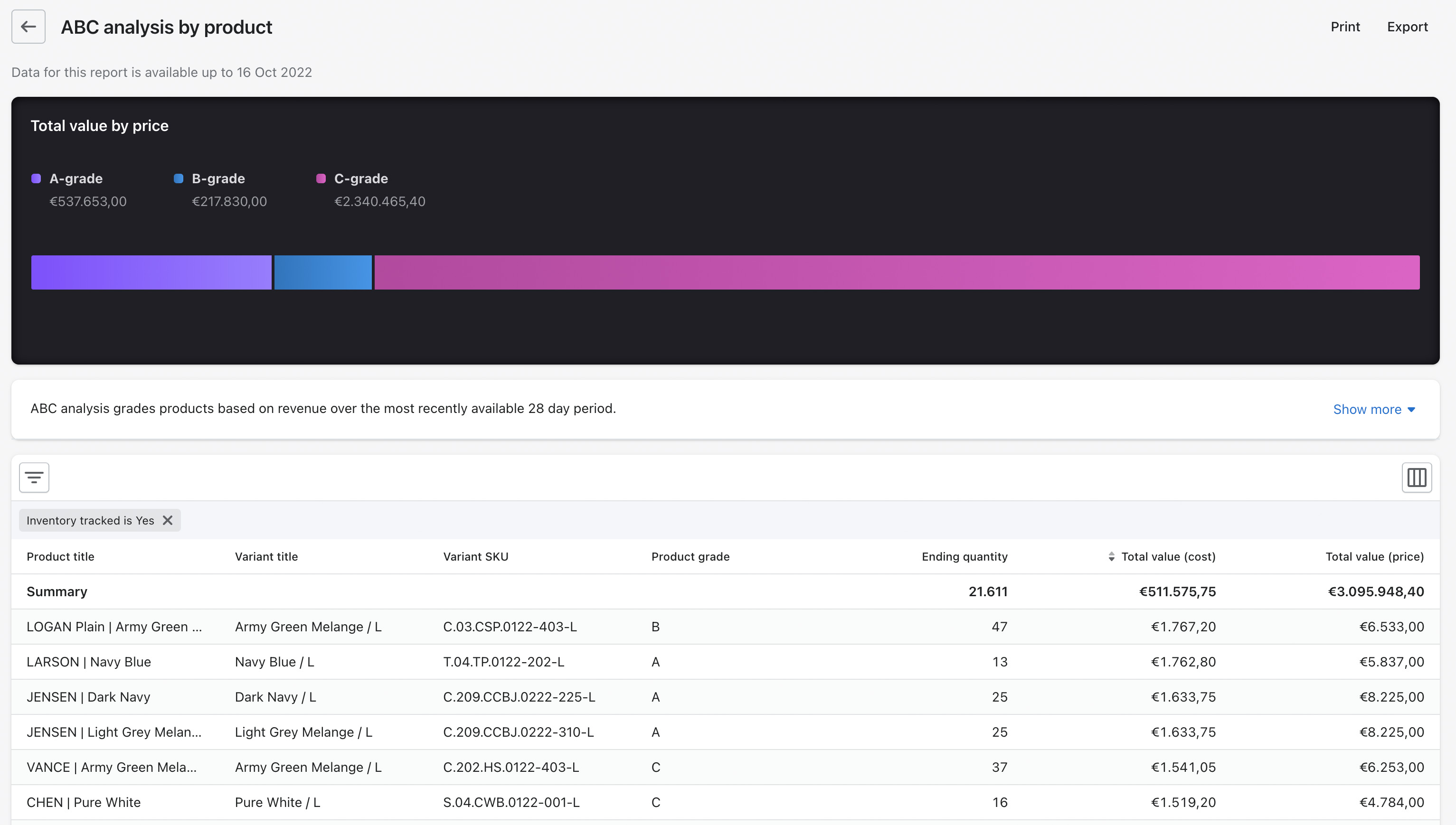
Consider adding smaller products and accessories
Of course the price, durability and size of your products are also factors to consider when you’re assessing your product catalogue. If you sell bikes, sofas or luxury watches, your AOV will be relatively high but purchase frequency will be considerably lower than if you sell clothing, jewellery or supplements. In that case, you cannot put all your focus on retention, as the diagram below illustrates.
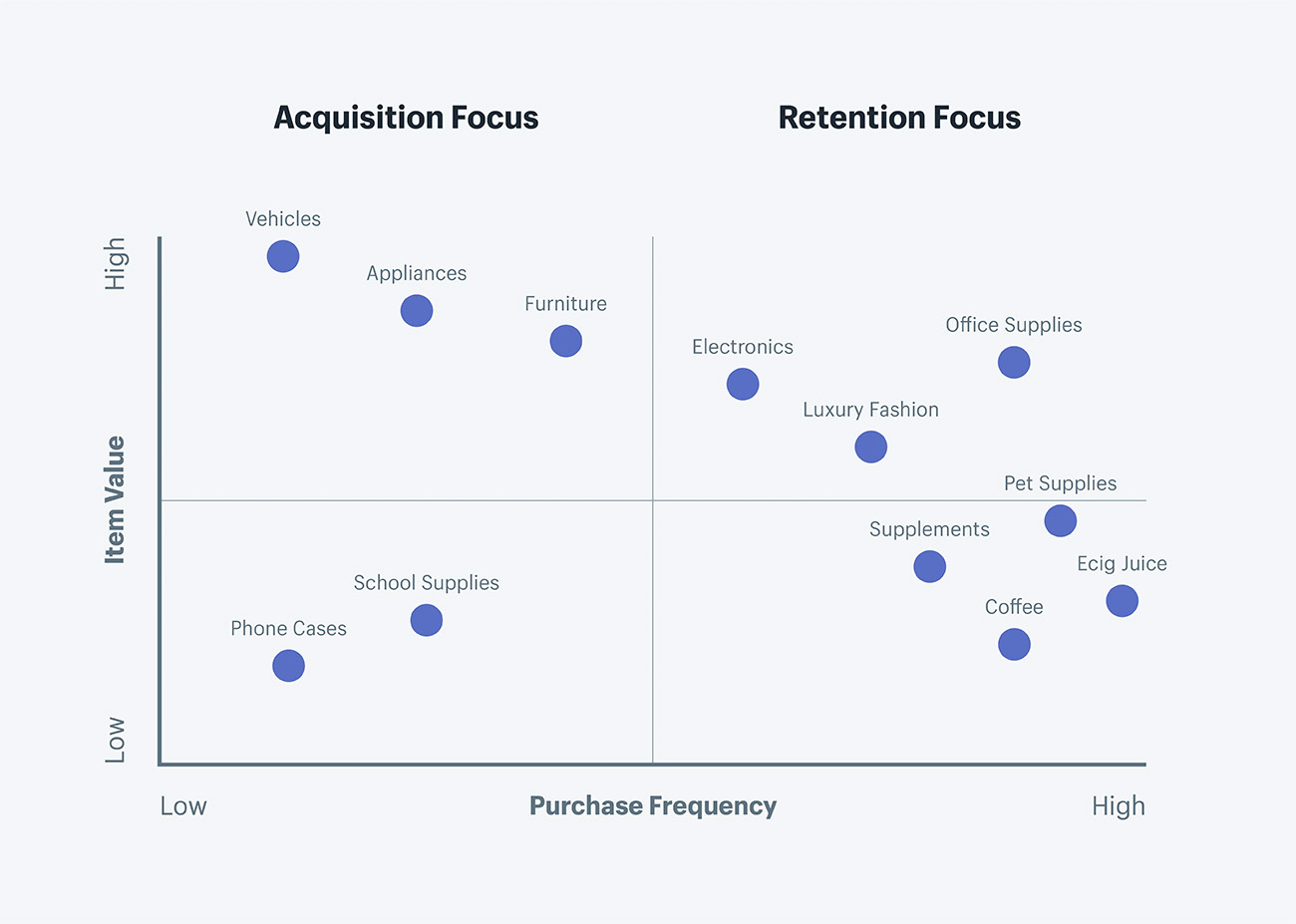
You can try to raise your AOV even further, though, while also giving customers a reason to come back more often. To make cross-selling possible, consider adding smaller items and accessories at a lower price point to your product catalogue. If you sell bikes, for instance, your customers might come back for accessories like bike helmets, spare tyres or bike locks. Before you roll this out, check the data though! Ask your favourite customers what they are interested in via a poll, run a test to see what sells, check the results and take it from there.
Consider offering fewer products
Depending on your product or product category, sometimes expanding your product range is not the right move for you. Sometimes specialisation is the key to growth, and a store starts doing really well as soon as they make rigorous choices. Third party sellers like to sell on a specialised webshop, customers like to buy from a specialised webshop, and last but not least: Google likes specialised webshops as well.
Many single-product webshops or niche stores are doing great, precisely because they position themselves so clearly. As a nice bonus, specialised businesses with few products become a lot more predictable: it’s a lot easier to calculate how much staff you will need, or how many square metres of storage, or what your revenue will be in 3 to 6 years.
Preparing your funnel for the customers you want
Combined with all the optimisations we gave you in the previous blog, the strategies in this blog will mean a major improvement to your sales funnel. After implementing them, you will have made it considerably easier and more attractive for your customers to keep shopping with you. In terms of numbers, you managed to increase your Frequency and Average Order Value - and your overall revenue!
So let’s put your new and improved funnel to the test with some new people, shall we? Let’s see if you can attract more of the customers you want for your business - and very selectively invest in some Traffic again. Only this time, you will make sure that everything on your end is optimised for a smooth experience.
Think you could use a little outside expertise with that? You can book a free growth audit with our e-com strategy specialist Coen Fredriks here.
And now … on to the last blog in our series, where we dive into the topic of improving your Customer Count and tell you a bit more about conversion optimization:
How to get the best new customers - on improving Conversion (and Traffic)
.jpg?width=1500&name=Upsell%20Cross-sell%20strategies%20(1).jpg)




